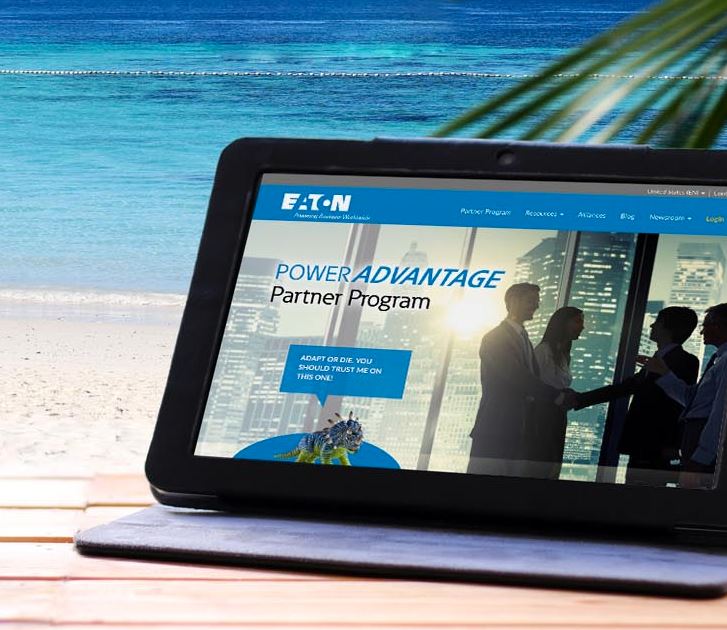Eaton Corp.‘s power quality division has rolled out an updated edition of its partner program designed to identify, enable, and reward the most committed members of its increasingly varied channel.
The Raleigh, N.C.-based vendor officially unveiled the new version of its PartnerAdvantage program at the 2019 edition of its annual partner summit conference, which wrapped up yesterday in Huntington Beach, Calif.
Unlike legacy versions of PartnerAdvantage, which treated all members more or less the same, the revised edition contains separate tracks for three kinds of partners—power quality specialists, providers of core infrastructure solutions, and managed service providers.
The new structure is designed to accommodate the different business models and therefore needs of a diverse partner base, according to Curtiz Gangi, vice president of channel sales for Eaton’s U.S. data center segment.
“It kind of fits what they want to do with their business,” he says. “It’s important as this market evolves that we evolve with it.”
MSPs are a growing and increasingly importance part of Eaton’s channel. The vendor explored launching an MSP-specific version of PartnerAdvantage at last year’s summit event, but ultimately decided to add a managed services track to the core program instead.
“We realized that it didn’t make any sense,” says Herve Tardy, vice president and general manager of Eaton’s distributed power quality division, of the company’s original plan. Most MSPs are also VARs at least some of the time, he observes, and most VARs are adding managed services to their current offerings.
Each track in the new program offers focused training resources and certification opportunities. According to Gangi, that comes in response to input from partners. “We take industry feedback as far as what are the partners looking for,” he says. “We’ve determined they’re looking for sales training.”
Members can qualify for three tiers. The registered tier, which is open to anyone, provides access to deal registration and not-for-resale products; a 10 percent base discount; and introductory education courses, among other benefits.
At the authorized level, members that have completed Eaton’s entry-level training classes and posted an Eaton logo or banner on their website receive a 15 percent base discount plus an incremental 2 percent price break on deals involving government and education clients. Authorized partners that file a business plan can also apply for market development funds.
Partners in the certified tier, the program’s highest, receive the same “stackable” 2 percent bonus margin on government and education sales, plus a 17 percent base discount, sales leads, and more. To gain certified status, program members must file a business plan and participate in partner marketing programs. In addition, at least one of their employees must complete an application training course and an industry training course.
Conspicuously absent from PartnerAdvantage’s revamped tiering model are revenue targets. According to Gangi, Eaton is more interested in driving engagement with partners than measuring their sales performance.
“We expect business plans with partners,” he says. “We expect executive reviews with them. We expect, quite honestly, monthly reviews with my partner development managers. We want to take a look at pipeline. We want to take a look at where we’re winning, where we’re losing, why.”
The goal is to hold partners accountable for satisfying meaningful requirements and compensate the most dedicated partners disproportionally. That’s a first for Eaton since it entered the power market roughly a decade ago.
“I think that after 10 years, we’ve realized that we’ve been really nice as it relates to the program and the benefits,” Gangi says. “We have expectations of our partners now.”
Eaton’s PartnerAdvantage update arrives in the midst of double-digit growth for the vendor, which re-organized its partner sales unit last year and has been placing a greater emphasis on selling systems and services from its various product lines in combination.













